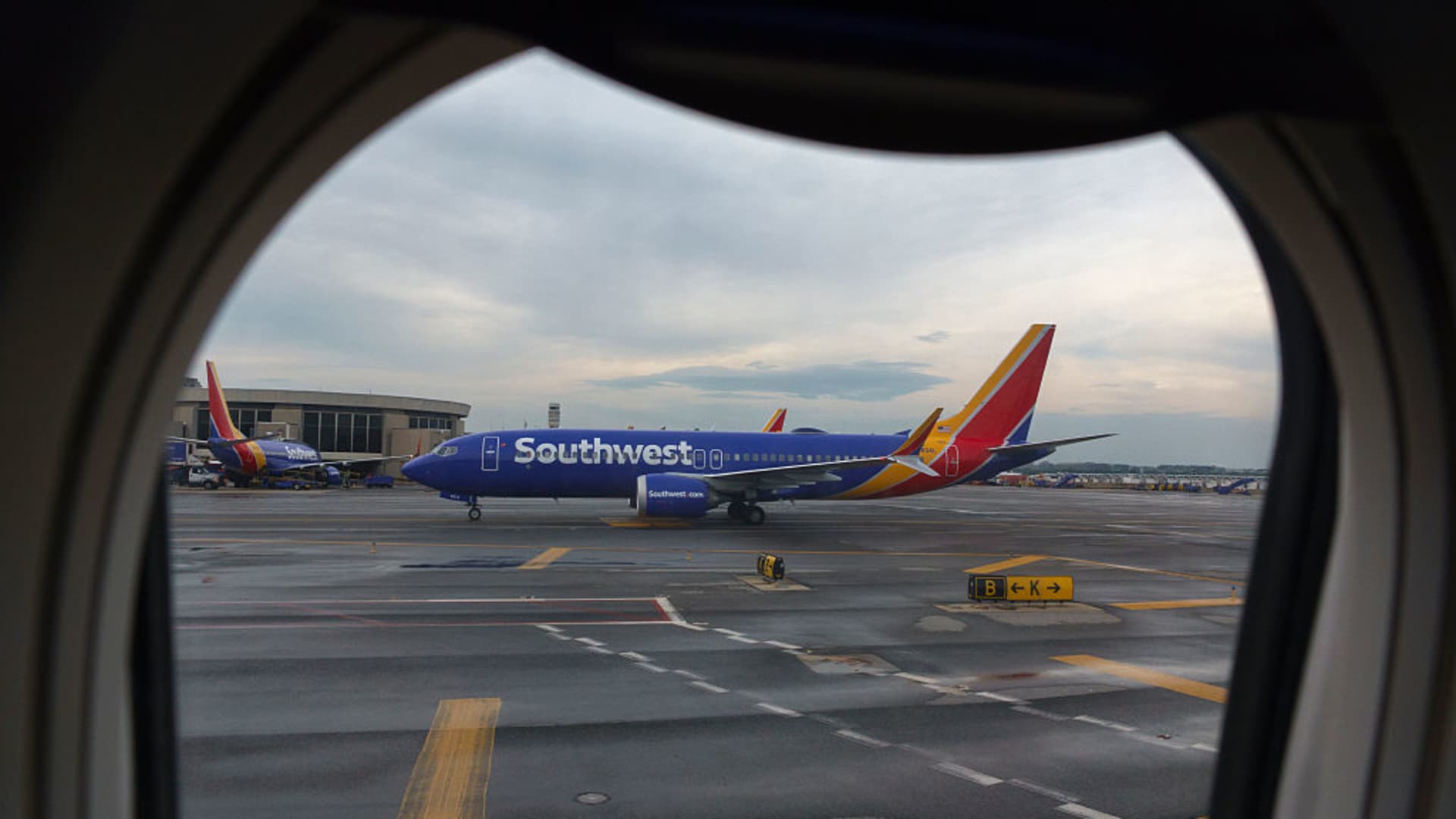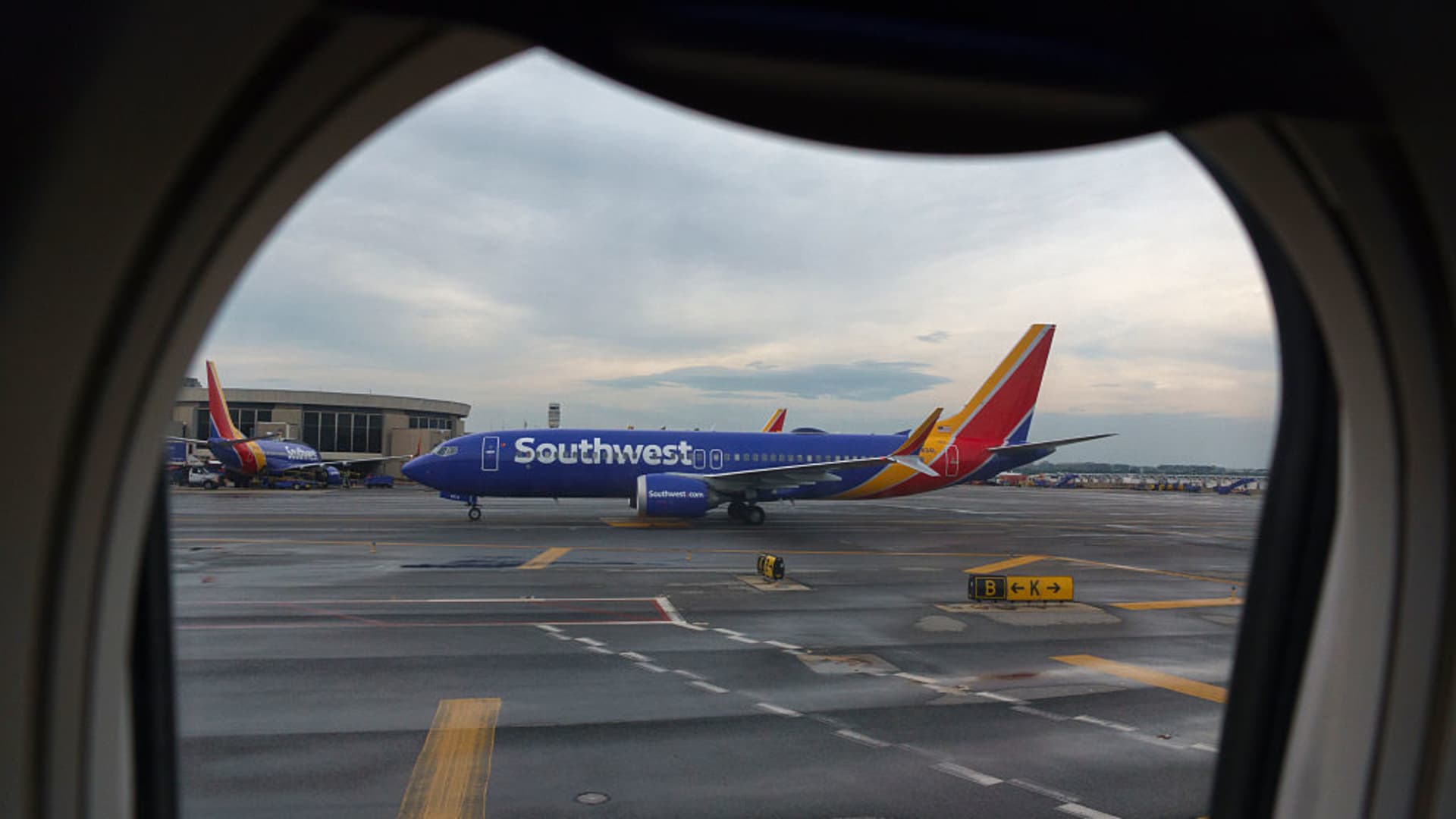Southwest Airlines: Navigating Turbulence and Charting a New Course
A Crossroads in the Skies
Southwest Airlines, a pioneer in low-cost air travel, stands at a critical juncture. Recent financial reports reveal a stark contrast: a 30% drop in quarterly profits alongside instances of exceeding earnings expectations. This dichotomy underscores the complexities of the airline’s current trajectory. To understand this paradox, we must examine the multifaceted challenges Southwest faces and the strategic maneuvers it employs to steer through the volatile aviation landscape.
The Ebb and Flow of Travel Demand
The most pressing challenge for Southwest is the shifting tide of domestic travel demand, particularly among budget-conscious leisure travelers. This segment, which forms the backbone of Southwest’s customer base, is exhibiting signs of fatigue. The post-pandemic travel surge, initially fueled by pent-up demand, is now normalizing. Consumers, grappling with inflation and economic uncertainty, are adopting a more cautious approach to spending.
This trend is particularly evident in the third quarter, where Southwest reported a decline in bookings, especially in domestic leisure travel. The airline’s reliance on this market segment makes it more vulnerable to economic fluctuations compared to larger carriers with diversified revenue streams. The softening demand has led to more empty seats and lower fares, directly impacting the airline’s profitability.
The Rising Tide of Costs
Beyond demand-related challenges, Southwest is contending with escalating costs. Labor expenses, a significant component of the airline’s operating costs, have been rising. Additionally, the costs associated with maintaining and operating its fleet are also on the upswing. These increasing expenses are further straining the airline’s profitability, especially in an environment where it is struggling to maintain fares due to weaker demand.
The confluence of these factors presents a challenging equation for Southwest. The airline must carefully balance revenue and expenses to navigate this turbulent period. This requires a strategic approach that addresses both the immediate challenges and the long-term sustainability of the business.
Strategic Adjustments: Steering Through the Storm
In response to these challenges, Southwest is implementing a series of strategic adjustments aimed at restoring profitability and positioning the airline for future success.
Slowing Growth: A Shift in Strategy
Recognizing the need to align capacity with demand, Southwest is slowing its growth rate. This strategic pivot involves absorbing current capacity, maturing development markets, and optimizing schedules to current travel patterns. By adopting a more measured approach, Southwest aims to enhance efficiency and profitability, moving away from aggressive expansion.
Capacity Cuts: A Necessary Measure
Southwest plans to cut flights in the second half of 2025. This decision is driven by the weakening demand throughout the quarter, which has led to softer bookings, particularly in domestic leisure travel. By reducing capacity, Southwest aims to better match supply with demand, thereby improving load factors and revenue per available seat mile (RASM).
Revenue Management and Marketing Evolution
Southwest is focusing on revenue management actions, network optimization, and marketing evolution to drive its quarterly revenue performance. This involves leveraging data analytics to optimize pricing, improve yield management, and enhance the customer experience. By adopting a more dynamic approach to revenue management, Southwest aims to maximize revenue in a challenging market environment.
Network Optimization: A Strategic Priority
Optimizing the airline’s route network is another key strategy. This involves analyzing the performance of different routes, identifying underperforming ones, and reallocating resources to more profitable markets. By focusing on high-demand routes and adjusting its network accordingly, Southwest aims to enhance its competitive position and improve profitability.
Ancillary Revenue: A Growing Focus
Southwest has placed a greater emphasis on ancillary revenue, particularly during the summer travel season. This includes offering additional services such as priority boarding, checked baggage, and in-flight amenities. By diversifying its revenue streams, Southwest aims to mitigate the impact of weaker demand and rising costs.
The Road Ahead: Challenges and Opportunities
Looking ahead, Southwest faces both opportunities and challenges. The airline’s strong brand reputation, loyal customer base, and efficient operating model remain significant assets. However, the evolving dynamics of the aviation industry, coupled with broader economic uncertainties, require Southwest to adapt and innovate.
Guidance Withdrawal: A Sign of Uncertainty
Southwest has pulled its 2025 financial guidance, citing economic uncertainty. This decision reflects the difficulty in predicting future performance in the face of volatile market conditions. By withdrawing its guidance, Southwest acknowledges the challenges it faces and the need for a more flexible approach to planning.
Activist Investor Pressure: A Catalyst for Change
Southwest Airlines is under pressure from an activist investor to shake up its management and restore profit margins to pre-pandemic levels. This pressure could serve as a catalyst for change, driving the airline to implement more aggressive strategies to improve its financial performance.
Trade War Uncertainty: A Looming Threat
The ongoing trade war between the U.S. and China has created uncertainty for the aviation industry. Southwest, like other U.S. carriers, has withdrawn its financial forecast due to the uncertainty created by the trade war. This highlights the need for Southwest to remain agile and adaptable in the face of external pressures.
Conclusion: A Test of Resilience
Southwest Airlines is at a pivotal moment, a test of its resilience and adaptability. The challenges it faces—weakening demand, rising costs, and external pressures—are significant. However, the airline’s proactive response, including strategic adjustments to growth, capacity, and network optimization, demonstrates its commitment to navigating these turbulent times.
The path forward will require careful execution, a continued focus on efficiency, and a deep understanding of the evolving needs and preferences of its customers. Whether Southwest can successfully chart a new flight plan and return to sustained profitability remains to be seen. However, the airline’s history of innovation and its unwavering commitment to its core values suggest that it is well-equipped to weather the storm and emerge stronger. As Southwest navigates this critical juncture, its ability to adapt and innovate will be key to its long-term success.












